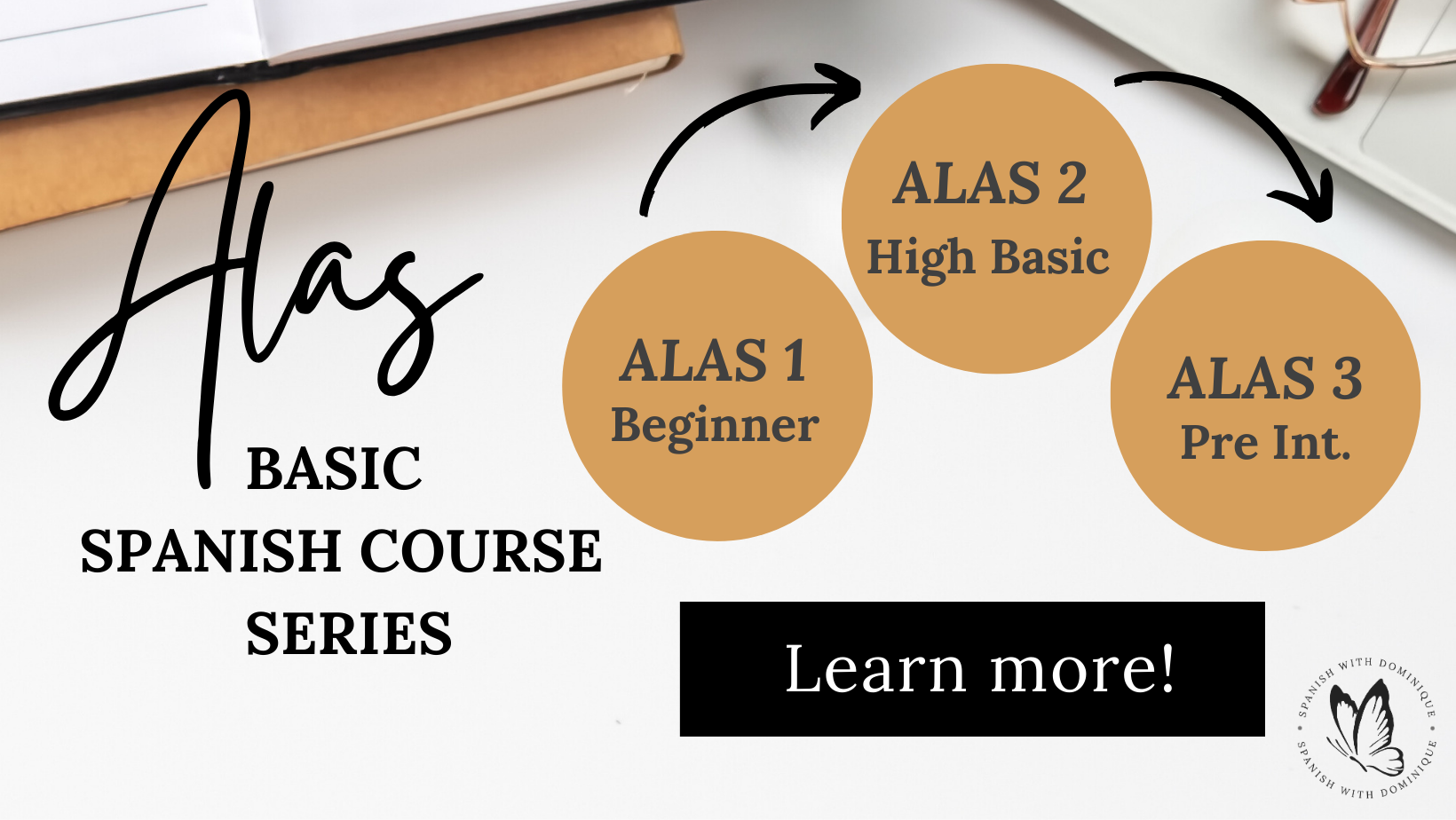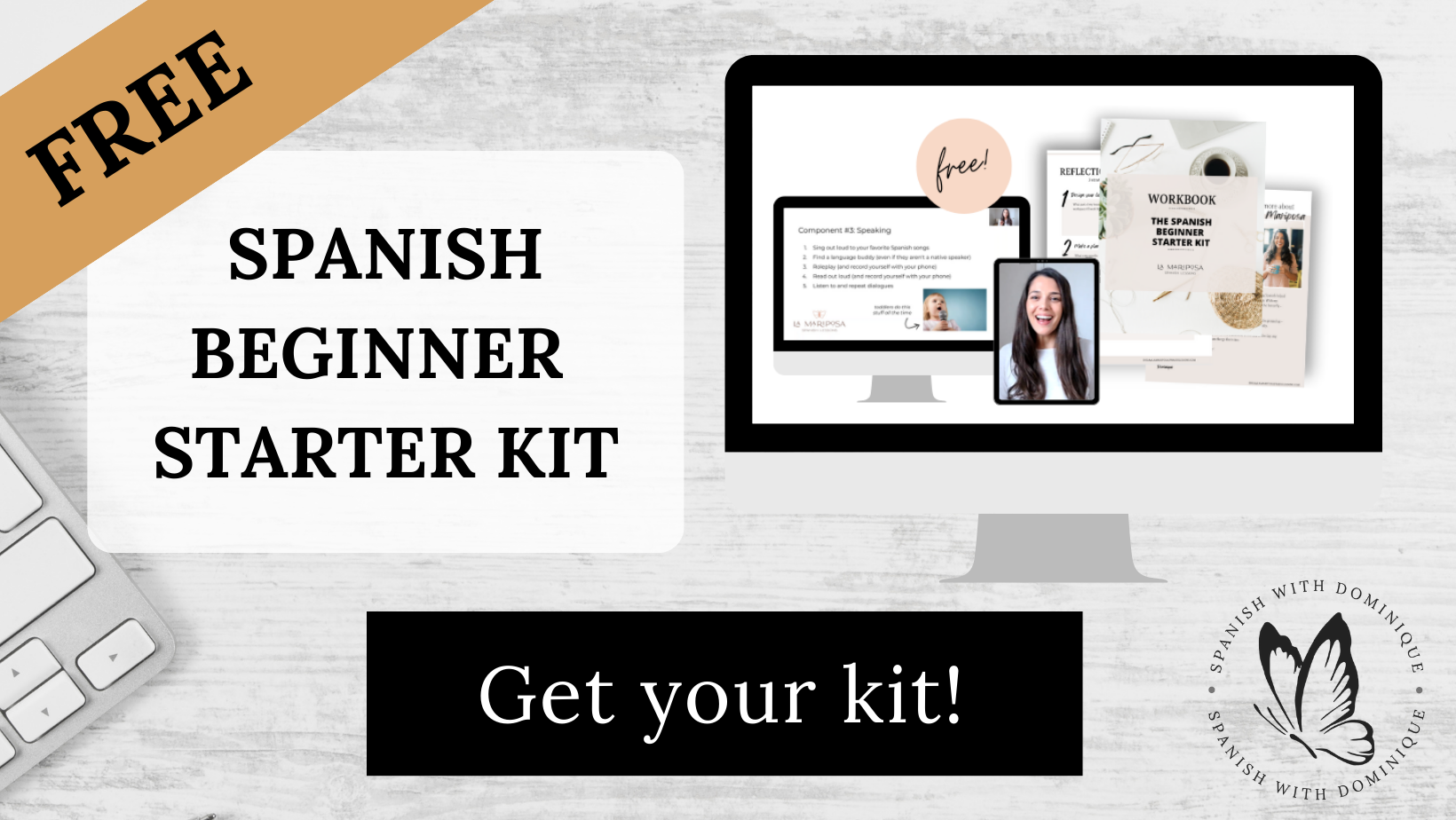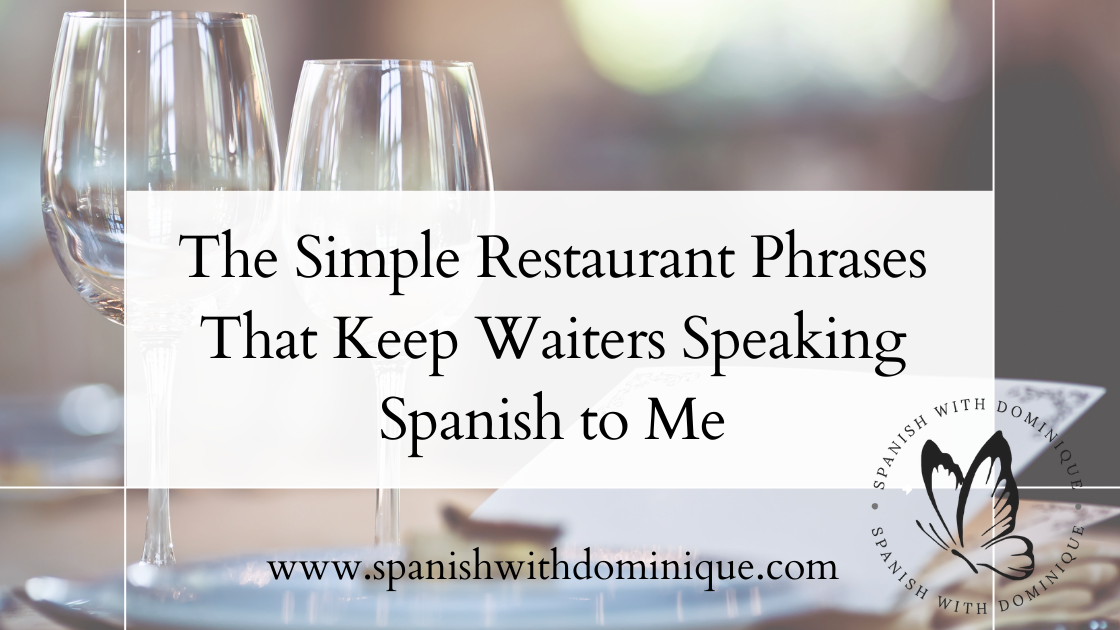6 Lessons I Learned from Learning Spanish as an Adult
In this post: Learn 6 strategies on how to learn Spanish for adults. Limit distractions and focus on the best ways to learn Spanish as an adult.
You’re elbow-deep into learning Spanish, and you’ve been using all sorts of different resources. Duolingo, YouTube, Podcasts, Netflix, and more. And yet, here you are, 3, 6, 12 months later, worrying that you still sound like a 3-year-old when you speak.
You also realize that you’re no closer to being able to book a hotel in Puerto Escondido or talk to your husband’s grandparents in Spanish. You're not even sure you could hit the local Mexican market and get what you need.
Those apps and YouTube channels seem fun and exciting, don’t they? Well, I hate to break it to you, but they’re actually a royal waste of time, and they're getting in the way of learning strategies that will really work for you.
I know this because I’ve seen my students get caught up in their 113-day streak on Duolingo. Then they come to me distraught because they couldn’t communicate with a Spanish-speaking woman who struck up a conversation with them at the grocery store the day before.
And you know what the sad part is?
When you try methods that don’t work, it’s easy to find yourself thinking: ‘I’m just not good at languages.’ And it's such a shame because all that time you spent on Duolingo, you could have been fostering habits that work.
So, what are those habits that actually help you speak up in Spanish in those first simple conversations?
Let me share my experience with you. From 2011-2012 I spent a year living in Barcelona, Spain. In just twelve months, I went from a beginner, A1 Spanish level, to a high intermediate, B2 level. This was back before podcasts, apps, and YouTube was even a thing. So, how did I do it?
Well, grab your Mexican hot chocolate and pull up a chair because, in this post, you’re going to learn how to actually learn Spanish as an adult from someone who’s already done it. I’ll walk you through the six ways I learned Spanish without apps, YouTube, or podcasts.
With these six strategies, you’ll be able to cut out distractions and create more meaningful interactions with Spanish to get the language to finally stick. They will also encourage you to open your eyes and ears to the Spanish-speaking world in your own backyard.
While reading this post, think about these questions:
What current resources are you using to learn Spanish?
How long have you been using them?
Have they really helped you improve your Spanish?
Or have they just been an easy thing to pick up because you didn’t know what else to do?
Six lessons that helped me learn Spanish as an adult without Apps, YouTube, or Podcasts
#1 Take ownership of your learning
During my 12 months in Barcelona, I took my learning seriously. While my classmates skipped lessons to go to the beach, I showed up and participated every single day. When my teachers presented a new concept, I would take it home, practice it, and actually do the assignments.
I understood, very early on, that I wouldn’t be able to lean on my teachers in the real world when I needed to use Spanish - that it was up to me to achieve fluency through practice and exposure. It was my responsibility to commit the grammar, the vocabulary, and the phrases to memory so that I could recall them.
Now it’s time to think about your own Spanish journey. What does committing to and taking ownership of your learning look like to you?
#2 Use a workbook and take formal classes
You might be feeling proud about your 78-day streak on Duolingo, but has that really equated to progress towards fluency in your Spanish? Probably not.
Through my personal journey of learning Spanish as an adult, I found that a combination of both a workbook and course introduced topics from different perspectives, which helped solidify them in my mind.
If you want to get serious about language learning, you need something to guide your learning. A good workbook alongside a formal course will give you that roadmap.
#3 Master basic grammar structure
There is currently an anti-grammar movement in the language-learning world that says, “well, if we learn our native language without grammar as children, then we should just do the same as adults.”
Let’s think about that for a second.
It takes a child about 5-6 years to reach a conversational level of fluency in their native language. However, I was able to do that in about 12 months. Why? Because I already understood grammar in my first language and was able to apply it to my second language.
Learning Spanish grammar structures early on gave me simple formulas to organize my ideas and get my messages across. These structures gave me the confidence to take phrases I saw or heard, break them down and then reuse them in my own sentences, without the help of a teacher to explain it to me.
#4 Create flashcards and review them often
Ask any polyglot (you know, people who learn 5+ languages) about the best way to discover new vocabulary, and 9 out of 10 will tell you, flashcards.
Compared to all the fancy apps out there, that probably doesn’t sound very exciting. However, using flashcards daily is the best way to commit new Spanish vocabulary to memory and be able to recall it later.
I know this because creating handwritten flashcards and reviewing them daily is the only method I have used to build my Spanish vocabulary over the last 10+ years.
Now, there are several ways to use flashcards, so make sure to choose a method that works for you. But don’t make your system too complicated. The most important thing is that you practice daily, not the elaborate way you do it.
If you prefer digital flashcards, my favorite program is Quizlet which you can access on your desktop or via their app.
#5 Limit distractions and pay attention to your surroundings
Living in Barcelona for a year, I had tons of opportunities to take in Spanish around me. One thing that really helped me to be more attentive was deciding to ditch my smartphone during that entire year.
By limiting distractions, I was able to fully absorb the Spanish around me - the light conversation between two friends at a coffee shop, the exchange between the client and vendor at the fruit stand, the playful comments between a father and young son.
If you live in the U.S. or Canada, there is Spanish all around you, you just have to listen. When I returned home to California, I soon realized that I wasn’t going to need YouTube or Netflix for continued exposure because there was so much Spanish spoken right in my backyard. Seeing the language in real life, right in front of me, was far more powerful than seeing it on a screen.
Maybe it will take some getting out of your comfort zone to have more authentic contact with Spanish and the people speaking it (I’m talking to you introverts!). But it's so much more rewarding (and effective!) than interacting with an app and hiding from the people all around you.
So, here’s an idea, when standing at the grocery store, or the bank, or the local coffee shop, leave your phone in the car or in your purse. Just stand there and be in the moment, and I promise you you’re bound to hear some Spanish.
#6 Listen to, sing and translate music
In 2011, podcasts weren’t a thing yet. But that didn’t stop me from listening to a ton of Spanish.
Even before moving to Barcelona, I had fallen in love with salsa music. I had all of Marc Anthony’s CDs on repeat on my iPod and spent hours listening to, translating, and singing his songs.
Although I didn’t understand it at the time, this was a powerful habit that propelled my Spanish to the next level. First, I leveled up my listening comprehension. Second, I grew my vocabulary. Third, I perfected my pronunciation. All while doing something I really loved.
If you’re ready to incorporate some Spanish music into your study routine, start with these artists who all have clear accents and simple lyrics: Julieta Venegas, Jesse & Joy, Prince Royce, Sebastian Yatra, Juanes, Carlos Vives, and Shakira.
Your takeaways as an adult learning Spanish:
Language learning has come a long way since I first started learning Spanish in 2011. There has been an explosion in the number of apps and learning resources out there to help you learn a language. But too many of them will waste your time and will distract you from building the habits that will actually help you learn.
Do you want to reach your dream of understanding the spoken Spanish between two friends sitting beside you at the coffee shop? Then you need to focus on the right strategies with an intentional plan to build practical Spanish skills.
Follow these six strategies to get started with your study plan:
Take ownership of your learning and commit to your daily practice habit.
Use a workbook while also participating in a formal course for structure.
Master simple, useful grammar structures early on.
Use flashcards to build your vocabulary.
Limit distractions and soak up the Spanish in your own community.
Listen, sing to and translate Spanish music.
Committing to a more grounded study plan like this is the best way for adults to learn Spanish. Do this, and you’ll soon be strolling through your favorite Oaxacan market with confidence and finally buy that piece of pottery you’ve been eyeing.
And don’t worry, you can still throw in a YouTube video, app game, or podcast episode here and there. Although you probably won’t have much time because you’ll be too busy enjoying actual interactions with real Spanish speakers in your everyday life.
More Posts Handpicked Just For You!
Enjoyed this post? Here are some more you might like.






